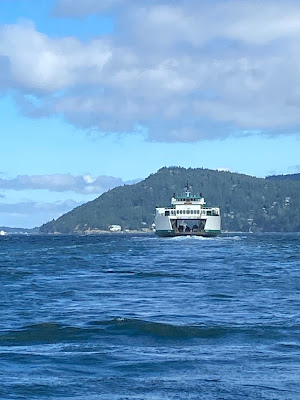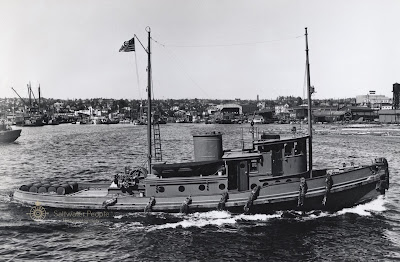 |
The GENERAL MIFFLIN,
in top photo, was arriving at
Fort Flagler coast artilllery headquarters
with inscription verso, the writer was assigned
to the 26th Co. to Fort Flagler, Washington
Coast Defense of Puget Sound.
He notes it was a 12 & 10-inch Rifle Company.
Card inscribed & signed by Frank K.
Two photos above from the archives of
the Saltwater People Historical Society© |
General Mifflin was a U.S. Army steamer built in 1904 at San Francisco as a fort tender.
She was 380 G.t, 250 N.t, 130' x 27' x 12.1'
In 1934 she was rebuilt at a cost of $35,000 at the West Seattle plant of the Alaska Steamship Co. as the mail, passenger, and freight streamer KENAI. The company had recently taken over the mail contract from Juneau to Sitka by way of Chichagof, Hoonah, and way ports, and the KENAI departed 4 July on her first voyage in this service.
 |
Steamer KENAI
(ex-General Mifflin)
Click image to enlarge.
8" x 10" photo by Jones Photo Co. of Aberdeen, WA.
Typed inscription on photo "800 HP, Ocean Going." |
1942: Foss Tug and Barge acquired the steamer KENAI; last in service as a feeder boat for the Alaska Steamship Co converting her to a towing service without a change of name.
1962: Towed to scrap yard.
Source: Gordon Newell, editor. H. W. McCurdy's Marine History of the PNW. Superior Pub. 1965.
List of Merchant Vessels of the United States. WA. D.C.,1906.
Further reading: Michael Skalley. Foss, Ninety Years of Towboating. Burbank, CA. Superior Publishing. 1986























